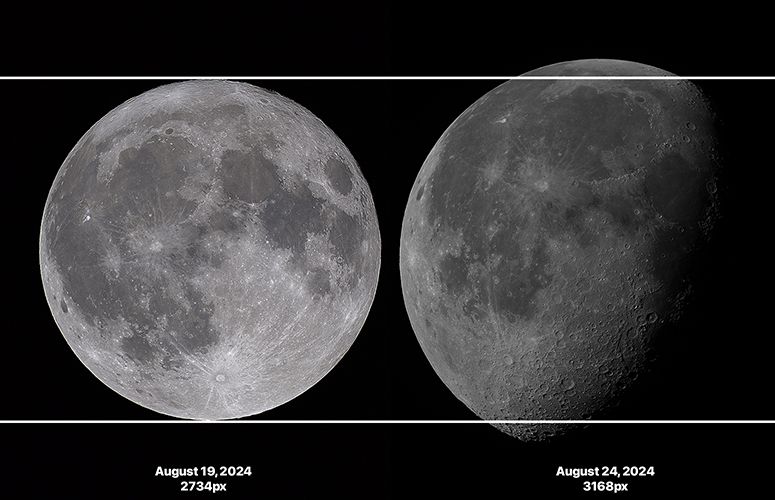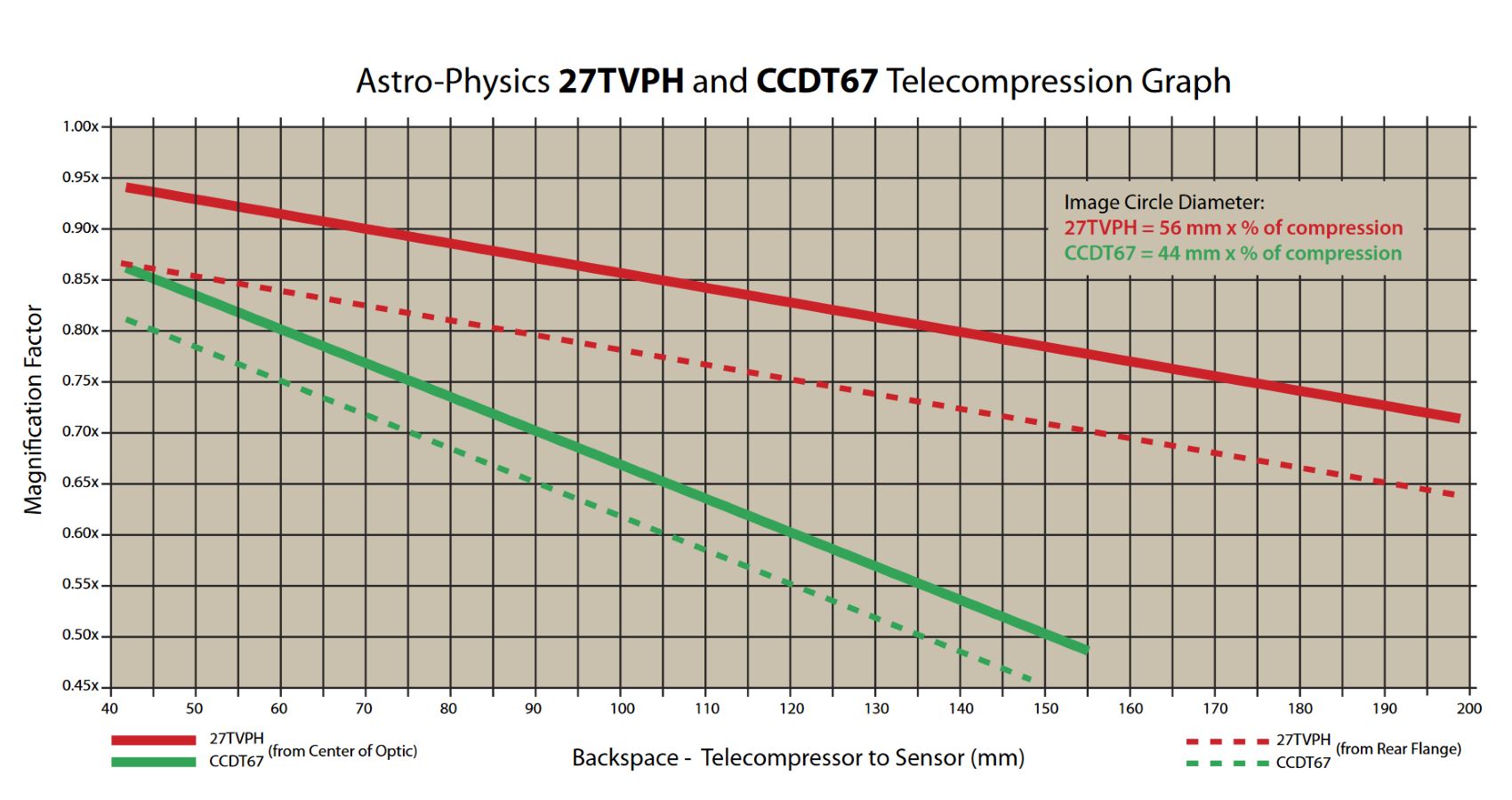I shot the mandatory Super Blue Moon on August 19.
I wasn't super happy with my data, but I still managed to get a picture out of it.
I usually don't like imaging the full moon, as the direction of light makes it seem a bit flat.
So, four days later, I took other pictures in the waning gibbous phase.
My data was much better, but surprisingly, the moon was also much bigger.
Here's a comparison:

The equipment used was:
- Celestron NexStar Evolution 6 (1500mm)
- Celestron 0.63 Reducer
- Canon EOS R7
Yes, I did use the reducer both times.
According to Sky Safari, here are the Moon's data on these dates:
August 19, 2024 - 11:08 PM:
- Distance: 359674 km
- Size: 33.2 arcmin
- Altitude: ~18°
August 24, 2024 - 04:19 AM:
- Distance: 358051 km
- Size: 33.4 arcmin
- Altitude: ~55°
I don't think the difference in distance would result in such a change, nor would atmospheric conditions, right?
On August 19, I left my filter drawer and extension tubes from a previous session with another camera.
On August 24, I removed them, so the Canon was directly attached to the T-adapter.
But this shouldn't affect the focal length, or does it?
Maybe I haven't tightened the focal reducer on the first night? Could that be the cause?
What am I missing here?
And more importantly, what did I do wrong so I don't repeat the same mistake?
Sorry if this is obvious, but I just can't stop thinking about this.
Thank you for your time.
CS!



